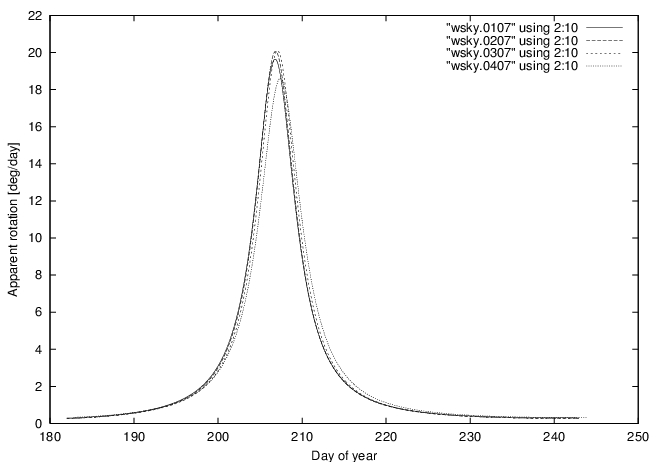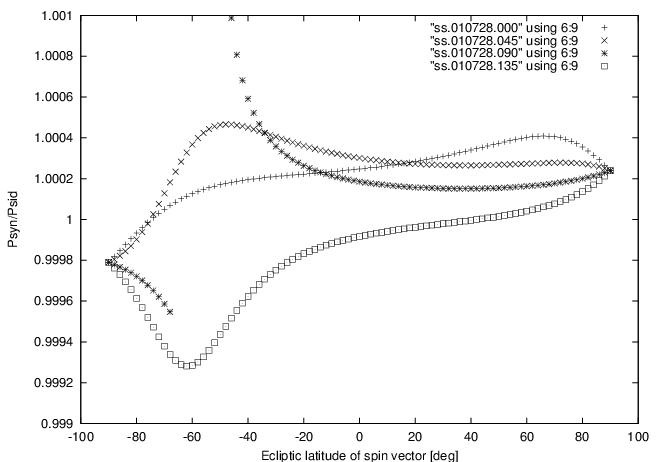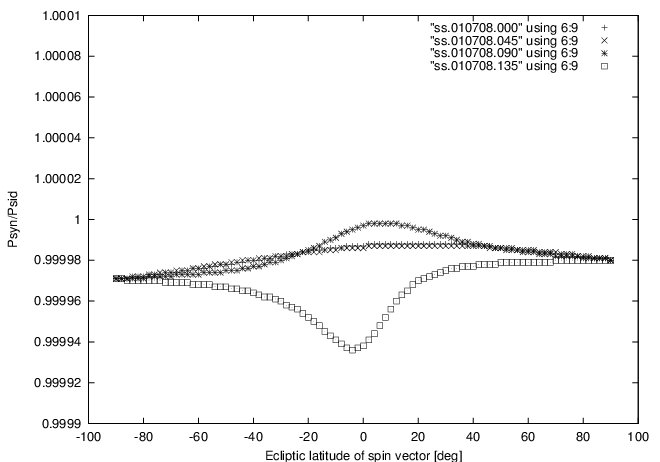

Figure 1: Evolution of the apparent rotation of 2000 PH5 due strictly to motion across the sky in Jul-Aug of 2001, 2002, 2003, and 2004. The rotation of the asteroid observed by an observer on Earth is the vector sum of the sidereal rotation (~42 000 deg/day) and apparent rotation due to motion across the sky. The first lightcurve measurements were obtained near the maximum on 2001 JUL 28, day of year 209.

Figure 2: Ratio of synodic to sideral periods at the time of observation of 2000 PH5 on 2001 JUL 28, assuming different orientations for the spin vector. Four curves are shown for the spin vector oriented at ecliptic longitudes of 0, 45, 90, and 135 degrees. Spin orientations within 10 degrees of the line of sight are discarded, as things tend to go wild there. The synodic-to-sidereal conversion changes significantly from one apparition to the next and from one day to the next within a single apparition, so the geometry must be well characterized for a YORP detection.

Figure 3: Same as above, but 20 days earlier on 2001 JUL 08. The curves have different shapes and the correction is about an order of magnitude less (Note scale change on vertical axis).
Back to the 2000 PH5 web page.